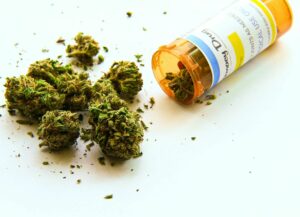What is Cachexia?
Cachexia is a condition characterized by extreme, unintentional weight
loss combined with loss of muscle mass that cannot be completely
explained by lowered intake of calories. Often, increasing food intake
has no effect, and anorexia is commonly seen in conjunction with this
condition.
Cachexia is primarily associated with cancer and HIV/AIDS, but may also
be seen in cases of congestive heart failure, tuberculosis, COPD,
rheumatoid arthritis, and other chronic diseases. It may also occur in
the elderly without any accompanying disease.
Fifty percent to 80 percent of cancer patients will develop cachexia,
usually but not always during the final stages. Whatever the cause,
patients suffering cachexia have a higher mortality rate than those
without.
Synthetic Cannabis Derivatives for Cachexia are FDA Approved
Back in 1985, the FDA approved
Dronabinol,
a synthetic THC derivative, to help treat wasting associated with
HIV/AIDS. In studies, oral intake of 5 mg twice daily did increase the
appetite of patients, leading to increased weight gain. Dronabinol,
under the brand name Marinol, has since been prescribed to combat
chemotherapy-induced nausea and vomiting in cancer patients with some
success. However, Dronabinol is prohibitively expensive to most patients.
Ingested Medical Marijuana for Cachexia
A 2007 study by researchers at Columbia
University,
found that orally administered medical marijuana significantly
stimulated the appetite of AIDS patients suffering from cachexia,
increasing calorie intake and promoting weight gain. A second study in
2011 found that ingested THC increased appetite in cancer patients by 64
percent. THC-dominant varieties of marijuana are the most successful in
treating cachexia, and research suggests that THC itself may be the
effective compound. The evidence is clear that cannabis has a beneficial
effect for patients suffering from cachexia.
Oral and sublingual preparations appear to be the most effective route
for administration. Today there are many different types of ingestible
cannabis-infused products that are very effective, including lozenges and
even lollipops for patients who may have difficulty with solid foods.
Sublingual drops or sprays are also an option. For those with no other
serious health issues, vaporizing or smoking may be a possibility, but
the other side effects of smoked marijuana make edibles a more
attractive option.






